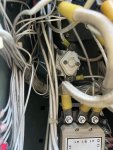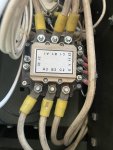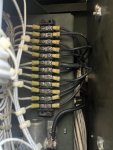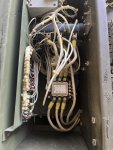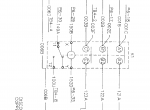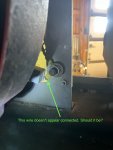- 2,959
- 7,227
- 113
- Location
- West greenwich/RI
Something you could try is to 1 by 1 remove the line and injector, reorient it so it's off to the side of the motor and crank it over and observe the fuel spray from each metering pump / injector combo. If you find 1 that doesn't spray when it should or continues to spray after the fuel solenoid is in the off position then you can at least narrow it down to the offending cyl. and investigate further.
When you say the motor won't turn off, does it continue to run at speed or does it die down but just barely continue at a low idle?
If it is staying at speed despite the FSS pushing the lever to the off position, then I would suspect a metering pump pin is not in the rack, or the rack is bent etc. If it idles low and just won't quite shut off You may need to adjust them or adjust the lever stop as Lucky described.
You also want all the metering pumps rotated counter clockwise as far as they will go until the fuel inlet hose is touching the adjacent pushrod tube.
If any pumps are spaced away from the pushrod ( too far clockwise ) that can cause that pump to not quite turn off completely.
Differences in pump orientation can also cause differences in fuel delivery and EGT's between cylinders, so we all typically put all 4 right against the pushrod tubes.
When you say the motor won't turn off, does it continue to run at speed or does it die down but just barely continue at a low idle?
If it is staying at speed despite the FSS pushing the lever to the off position, then I would suspect a metering pump pin is not in the rack, or the rack is bent etc. If it idles low and just won't quite shut off You may need to adjust them or adjust the lever stop as Lucky described.
You also want all the metering pumps rotated counter clockwise as far as they will go until the fuel inlet hose is touching the adjacent pushrod tube.
If any pumps are spaced away from the pushrod ( too far clockwise ) that can cause that pump to not quite turn off completely.
Differences in pump orientation can also cause differences in fuel delivery and EGT's between cylinders, so we all typically put all 4 right against the pushrod tubes.


